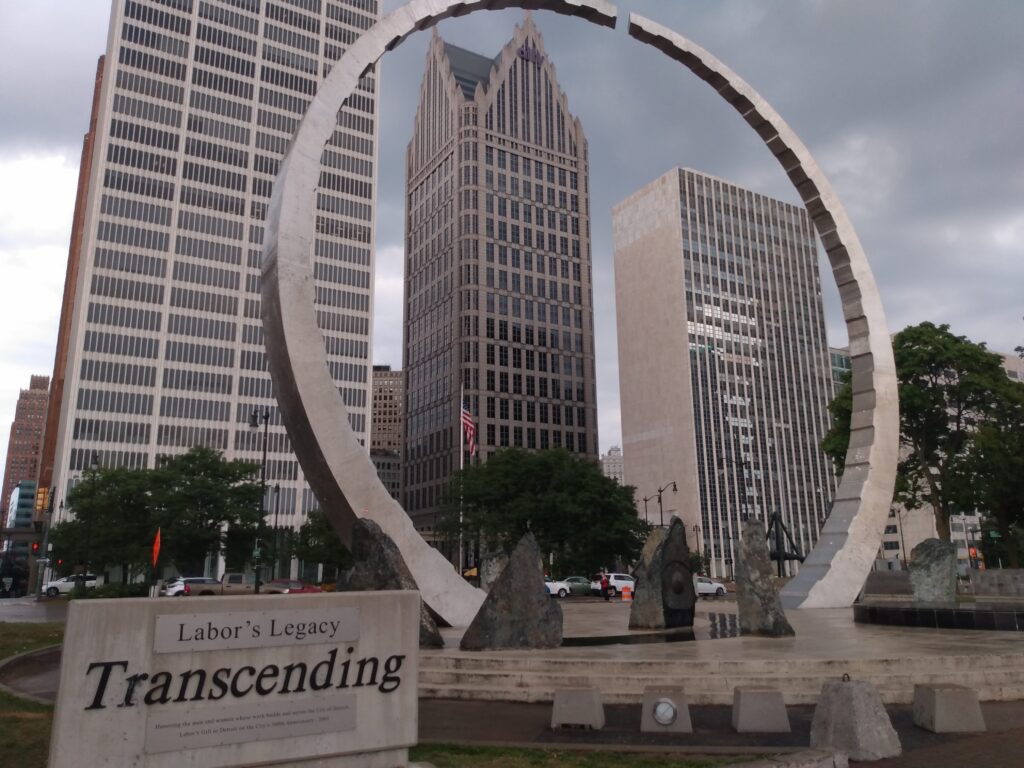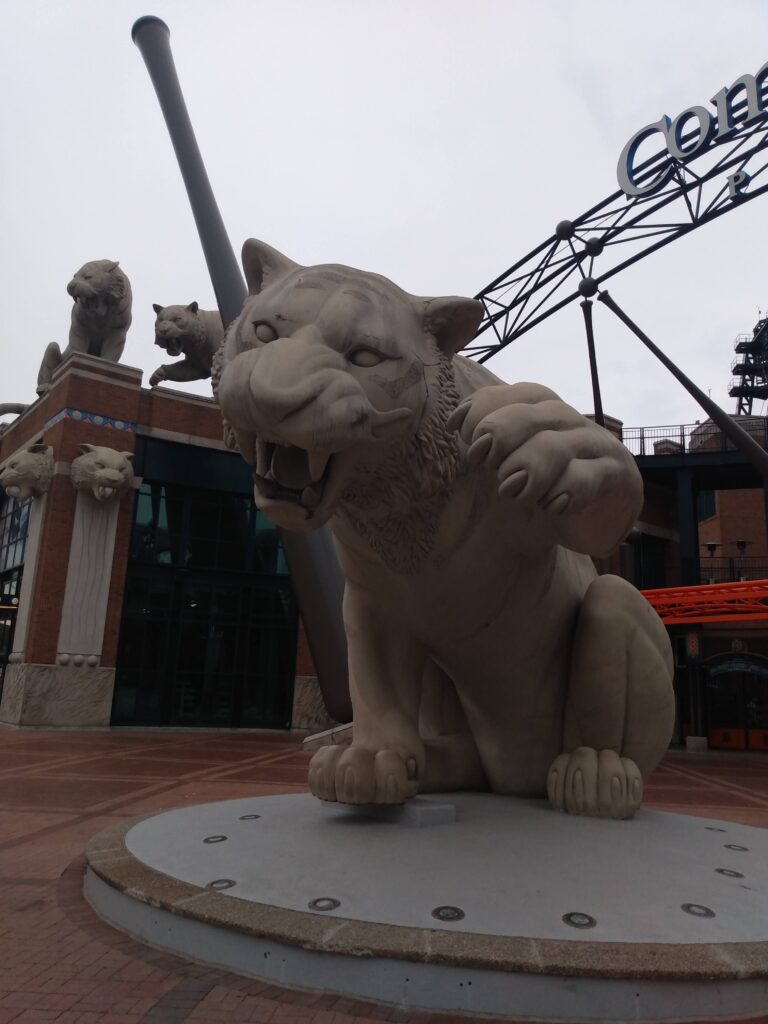Detroit has become the name for something bigger than a city. It represents something: a failed city, the decline of America’s automobile dominance, the segregation of America’s north, the failures of the labor movement, crime, poverty, riots, renaissance, you name it. Because of both Detroit’s and Toledo’s place in the automotive industry, I grew up in its shadow. We rarely went there for anything but Major League Baseball games, but many of my friends from home have a more intimate relationship with the city. In my caregiving years, the test prep company I worked for sent me to Detroit to offer classes. But, for the most part, “Detroit” really referred to its suburbs, which surprised by their affluence. In recent years, friends from other parts of the country have indicated to me that they know it for its renaissance and it’s nightlife. But I don’t hear that as much from midwestern friends. I barely know the downtown, so I was glad to have Amy as a guide to it. We started the day at her home, where she produced an elegant, simple, and nutritious breakfast. Then we headed into the Motor City.

We started at the Guardian Building, an art deco monument to Michigan’s economy that completed construction in 1929, the same year the Stock Market crashed and initiated the Great Depression. We wandered around the mosaic tiles stylized as a tribute to native Americans, admired its Tiffany glass clock, and absorbed its stylized map of Michigan (the mitten) with with 1920’s-era representations of the various streams of the state’s robust economy. Amy had hoped I could buy some Michigan goods there, but the shop had closed during Covid.

We headed back outside toward the River Walk. We swung on the massive swings, then headed to the Spirit of Detroit statue, where other tourists posed for pictures and we tried to avoid the fairly aggressive street people who seemed ubiquitous in the area. We crossed over to the walk near the Hart Plaza, where the fountain was not working, so it looked to me like a monument to the car tire. The plaza includes a monument to Cadillac’s landing, but the most interesting monument along this part of the walk is the International Underground Railroad Memorial, which commemorates the importance of Detroit as a connection point to Canada, which sits across the bay. The US landscape is dotted with monuments to freedom, so this one is unique in that it is a monument to people finding freedom by leaving the country. In it, a collection of enslaved people face Windsor in hope of putting slavery behind them in the US.

Amy and I lingered there and looked over the bay to Windsor, one place in the US where Canada is our neighbor to the south. The Canadian flag unfurled itself in the wind and we continued down the walk. Along the way, we encountered a number of people wanting to pray with us, folks walking gorgeous dogs that were up for adoption (and one seriously tempted me), and a bridal party–which Amy felt was good luck while I was struck by the bridal party helping the bride with her spanks in public while the photographer waited. Yeah, that seems like Detroit.

For the most part, the rain held off and we headed back toward Transcending, a monument to the labor movement, which details workplace gains over the last century and a bit. It is adjacent to the The Fist, the statue of champion boxer Joe Lewis’ fist outside the arena named for him. The sidewalk around the monument includes chalk drawings from Black Lives Matter, which reminded me of the Free Derry Corner in Northern Ireland.
Once off the River Walk, we started over toward a pretty stone church that we could not find explained on our maps. The plaza before it had been abandoned that day to a very agressive homeless person, so we made our way through street traffic to learn that it is the Mariners Church, built in 1849 to meet the spiritual needs of Great Lakes seamen. In 1955, it was moved to its present location to make way for the Civic Center and was later immortalized in Gordon Lightfoot’s ballad, “The Wreck of the Edmond Fitzgerald.” It was locked to outsiders, unsurprisingly given the population on the plaza.

At this point, we met up with another high school friend for a fun lunch and, after, walked through the downtown toward the new Tiger Stadium, Comerica Park–new to me anyway (the one I knew from childhood was knocked down in 2009). There was a game that afternoon, so the area was full of activity and, despite my nostalgia, I enjoyed the tiger statues outside. We made one more stop at the Fox Theatre to admire the interior, but a show was going on so we could not poke around. Our stop for adult milk shakes near by coincided with the promised rain storm, so we lingered there and then ran back to our car during a lull, so we missed our chance to stop in the theater later.

The day had been long and we had missed the Farmers Market. I asked about Hitsville USA, the original Motown Records location which is now a museum, but my friends did not know it and the online information indicated it was closed for the rest of the weekend. We had racked up 20 thousand steps, so we spent the evening hanging out at Amy’s house in Plymouth over another delicious home cooked meal.
